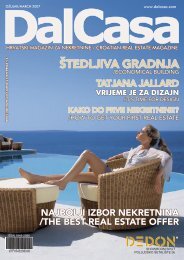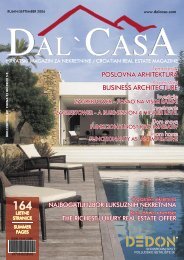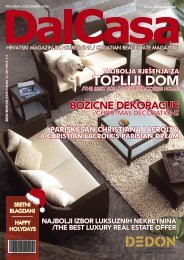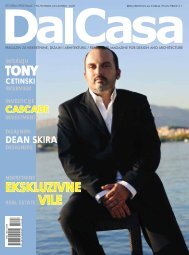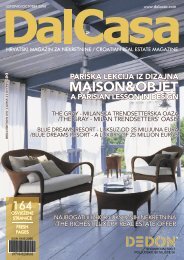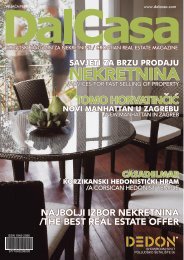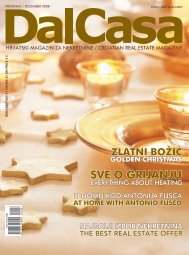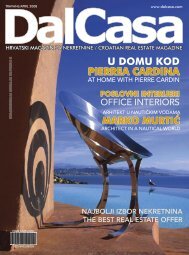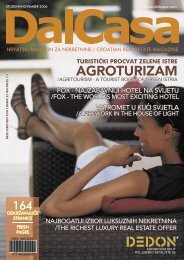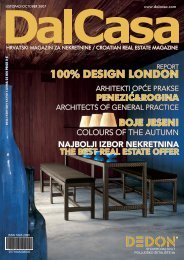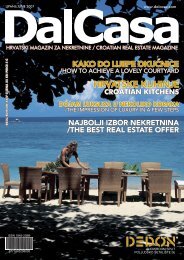saša šekoranja interijeri za zaljubljene - DalCasa
saša šekoranja interijeri za zaljubljene - DalCasa
saša šekoranja interijeri za zaljubljene - DalCasa
You also want an ePaper? Increase the reach of your titles
YUMPU automatically turns print PDFs into web optimized ePapers that Google loves.
The Unity of Form and<br />
Material<br />
Tulip Chair was designed for the New York<br />
Knoll in 1956. Its smooth modernistic lines,<br />
rounded surfaces and new, experimental materials<br />
(aluminium base, fibreglass) presented<br />
it as a slightly futuristic piece of furniture,<br />
while its intertwining with space and the open<br />
form of a flower serve as a tribute to organic<br />
design, the author’s Scandinavian origin and<br />
his sculptural background<br />
Written by: Nataša Bodrožiæ<br />
Photo: www.knoll.com<br />
Eero Saarinen, architect and designer, a man who<br />
has given appearance to some representative<br />
buildings of the twentieth century, such as JFK Airport<br />
in New York or Dulles Airport in Washington,<br />
has also left a visible trace in the field of interior design<br />
by creating some of the furniture that has marked the<br />
twentieth century. The Saarinen name has remained<br />
synonymous with refinement and harmony for more<br />
than one generation.<br />
Born in Helsinki, Eero Saarinen and his family left for America<br />
in the 1920s, as his father Eliel Saarinen, famous archi-<br />
A piece of cult<br />
Eero Saarinen: Tulip Chair (1956.)<br />
101



